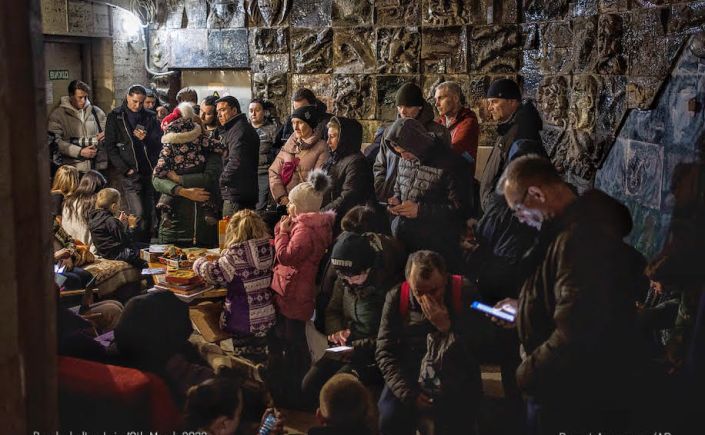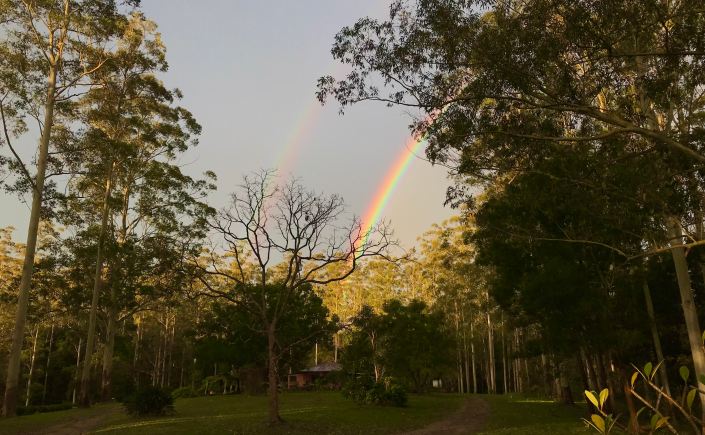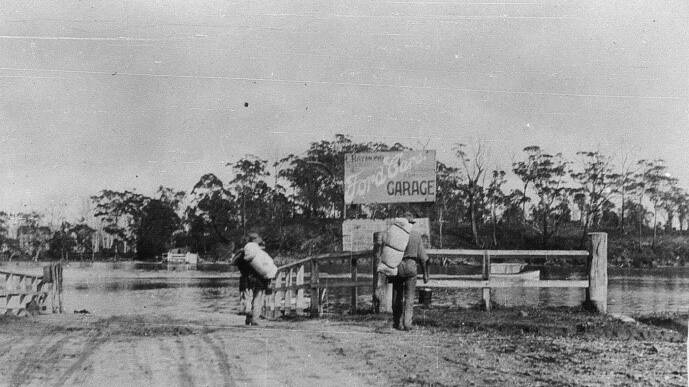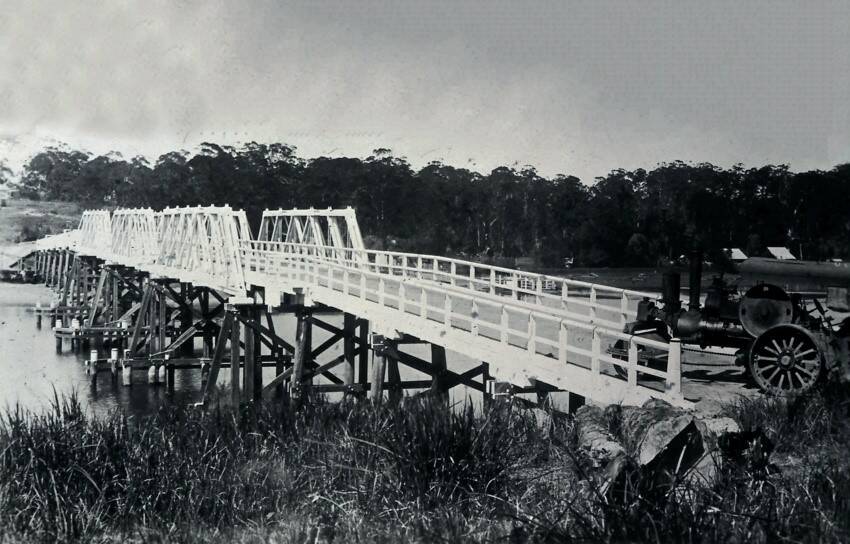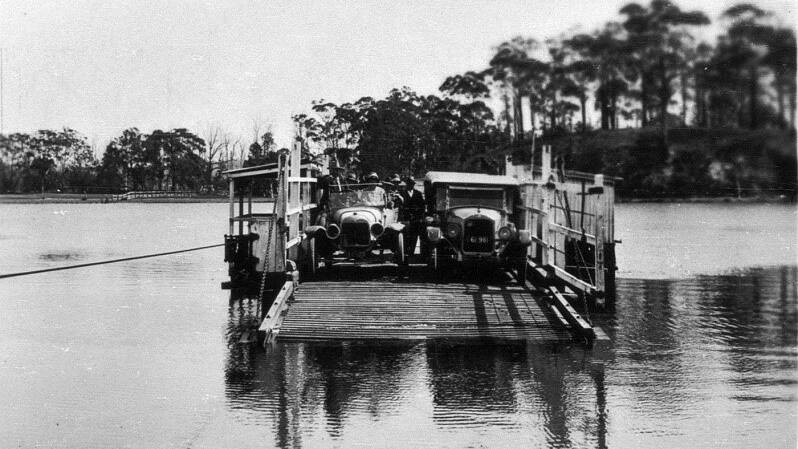The Biomass Greenwash revisited
I believe in Santa, fairies, leprechauns and unicorns; I believe that politicians don’t lie, that the Pope is infallible, and that capitalism provides the greatest happiness for the greatest number
But I don’t buy the biofuel greenwash!
As Abe Lincoln, said, you can fool some of the people some of the time, and most of the people most of the time. And yet, never underestimate the capacity and willingness of some people to swallow bullshit for decades. Probably became they NEED to believe that something is being done about climate change and carbon emissions, and the boosters of biomass promise clean, green, renewable, carbon-neutral and sustainable power. As some wits might ask, what’s the point of having a big brain if we insist on not using it?
In an earlier article, The Bonfire of the Insanities – the Biomass Greenwash, we described how the European Union’s desperation to reduce carbon emissions and dependence on fossil fuels kicked off a demand for wood pellets for burning to generate electricity that in turn created an industry. Promising clean, green, renewable, carbon-neutral and sustainable power, it came for what it called forest waste, and then it came for the forest itself.
We revealed how a deliberate accounting error determined biomass burning to be carbon neutral, whilst a mechanism to prevent counting carbon twice became a rule that carbon wasn’t counted at all. Indeed, it was declared that the burning of biomass was “instant carbon sequestration” whilst emissions exuding from the new-age power stations were actually “biogenic carbon” – green power!
Since the widespread distribution of North Carolina’s Dogwood Alliance’s hard hitting film BURNED: Are Trees the New Coal?, the true scale of the biofuel greenwash is being given the publicity it needs. The true colours of rebadged, born-again power plants like Drax near Selby, Yorkshire, the world’s biggest and hungriest, and our own Redbank in the Hunter Valley (more on that later), are now there for all the world to see. And they are not green.

A backlash against this greenwash is growing apace in Europe and the USA. But not in Australia, it would appear. Government and industry are enchanted by the lure of biomass with its carbon credit rewards and the prospect of creating a dependent, profitable domestic supply chain.
“We, the people” have yet to cotton on to the biofuel industry’s corporate jiggerypokery and semantic sleight of hand. In Australia and elsewhere, the general public, forest industry nostalgists, conservative politicians, and, even, many environmentalists believe that we are saving forests from destruction by using plantations for jobs and construction timber, when in fact the former are few, supplanted by hi-tech mechanization, and latter is destined for pulp mills and power plants.
While we in northern New South Wales might be alarmed about re-tooled plants like Drax and those in Ireland’s Midlands, something wicked this way comes. There is little community awareness of what is looming, and state and federal politicians chose to keep quiet about it.
Our State government has started implementing its plan for 70-80% of renewable electricity in our region to be generated by burning trees. As we’ve seen in our own Tarkeeth State Forest, biomass extraction is a shockingly destructive practice, and it is one which is destroying environments and communities all over the world.

Biomass extraction in Tarkeeth Forest, Bellingen Shire
In this grave new world, whole log “residues” can be chipped and transported to power stations or transported and then chipped in the power station, as at Vales Point on NSW’s Central Coast and Cape Byron in the north. Native forest biomass burnt with or without coal or something else, props up emission intensive enterprises with its “carbon neutral, renewable energy, subsidy attracting” hypnotism. Or else, the forest biomass is exported, as pellets, woodchip or whole trees.
It is a new industry for our own Bellingen Shire which is now supplying biomass to Cape Byron Power’s co-generation plant at Broadwater south of Byron Bay, the north coast tourist mecca and real estate hot zone.
The plan for our region is for 70-80% of renewable energy to be generated from forest biomass. By the middle of the year the former coal-fired Redbank Power Station at Singleton in the Hunter Valley, will be rebooted and burning 100% biomass, most of it to be sourced from forests up the 400km away. Redbank will be one of the largest wood burning electricity generators in the world. At 151 megawats, it five times bigger than either Broadwater or Condong,
Paul Hemphill © 2021
See also in In That Howling Infinite, The Bonfire of the Insanities – the biofuel greenwash; The Return of the Forest Wars and If You Go Down to the Woods Today
In a brief statement and a powerful interview on Bellingen Community Radio 2BBB, Bellingen academic Dr Tim Cadman makes the global and local case against burning trees for electricity. and here, you can watch his short FaceBook video about the Tarkeeth biomass and Broadwater power station here: ttps://fb.watch/v/3Is1JLwio/. Follow the truck from forest to furnace
Tim Cadman: the truth about Biomass ‘Green Power’
My name is Tim Cadman, I am a Research Fellow in the Law Futures Centre at Griffith University, specializing in environmental policy, governance, sustainability, natural resource management including forestry, and climate change. I am a ‘pracademic’ and spend a lot of my time working in developing countries in practical on-the-ground action-based research, including Papua New Guinea and the Brazilian Amazon.
I have been following, and attending the international climate change negotiations since 2001, when I exposed how forestry companies were clearing ancient rainforest on behalf of energy companies to create plantations for ‘carbon credits.’ Sadly, over twenty years later, this same problem is still besetting meaningful action on climate change.
I want to address so-called bio-energy, or biomass energy, and how it has become central to the destruction of forests in developed countries such as the US, UK, Australia and Europe, all in the name of ‘green’ power.
In the early days of the international climate negotiations an unintentional ‘loophole’ was created in discussions around what was termed ‘land use, land-use change and forestry’ (LULUCF). In the debate around how to count emissions from land use for agriculture, policymakers made a decision that all crops were the same, and as they were planted, harvested, and grew back, these emissions did not need to be counted. This included forestry, and this decision made its way into the Kyoto Protocol, and carbon ‘offsets’.
It doesn’t make sense for forests, which are not crops, are full of biodiversity, regulate climate, filter water, and provide a range of what are called ecosystem services that a field of carrots do not. This same problem, now admitted as such by many policy makers, has been repeated in the new Paris Agreement.
The consequence is that forests have now become a major source of electricity in Europe, the UK, and elsewhere.
As much forest as is grown across the UK every year is now burnt in just one power station, Drax, and is imported from the forests of the South east of the US, and the inland ancient temperate rainforests of Canada.
This same problem is being repeated here. In the mid north coast of NSW, under the guise of making use of what are called forest ‘residues’, large areas of forests are being cleared and converted to hardwood plantations. As with wood-chipping for pulp and paper, which originally was designed to make use of branches, such activities become a driver of deforestation, and the processing of ‘waste’ becomes the tail that wags the dog.
To make matters worse, there are now two converted sugar mills in the region that are burning this wood for so-called ‘green’ energy and feeding it into the national grid. In short, our renewable energy is contaminated.
And finally, to things even more dire, burning forests for power is worse than coal. The wood is wet, it is transported often up to two hundred kilometres in huge trucks, the source forest is burnt as part of forestry management. Capturing these emissions is just not possible.
This is the danger facing the forests of NSW. Forests are worth so much more, and in this period of unprecedented climate change, we need forests standing tall, not sent up the chimney.
Dr Tim Cadman © 2021
Tim Cadman BA (Hons) MA (Cantab), PhD (Tasmania), Grad. Cert. Theol. (Charles Sturt) Senior Research Fellow, Earth Systems Governance Project. Research Fellow, Institute for Ethics, Governance and Law. Griffith University
The road to hell is paved with flawed intentions
We republish below the full text of an article that appeared in The Financial Times on 1st July. As the debate ramps up here in New South Wales, it is a timely and informative wake-up call for environmentalists and governments alike.
Like BURNED: Are Trees the New Coal?, it reveals how dirty fuel and dodgy mathematics, a generous subsidies system and stringent climate targets incentivises the use of biomass without adequate safeguards. It will require “large-scale logging of the forests we need to store carbon”, says Almuth Ernsting, from the campaign group Biofuelwatch. And yet, current EU rules permit the use of whole trees for energy production.
Biomass fuels include pellets, organic waste and crops grown for energy. They produce around half of the world’s renewable energy, and 60 per cent of the EU’s, and are treated as carbon neutral if certain sustainability conditions are met. Across Europe and Asia, the two main markets for pellets, governments hand out billions in subsidies to the industry each year. And as the world races to decarbonise, the use of wood-based biomass is expected to increase. In a report this year about the pathway to net zero, the International Energy Agency said solid bioenergy could produce around 14 per cent of global energy in 2050, compared with just 5 per cent last year.
With a review of the bloc’s climate legislation imminent, ministers from countries including Finland, Estonia and Sweden asked for “all forms” of bioenergy currently labelled as renewable to also qualify as sustainable investments, “keeping in mind” the EU’s decarbonisation commitments. It was a none too subtle reminder that if the status of biomass is changed it may be almost impossible for the EU to meet its target for renewables to provide a third of all energy usage across the region by 2030. The politics of all this is perverse, says a former White House climate adviser.
According to a leaked commission document, Brussels plans to prevent some forms of wood-burning energy from counting towards the bloc’s green energy goals. Campaigners say the changes must go much further, by excluding forest biomass from the renewables list altogether. “We should not be subsidising people to cut down trees and burn them,” says Ariel Brunner, head of EU policy at conservation group BirdLife International. “The notion that you can save emissions by burning carbon fundamentally doesn’t work.”
Chopping down trees, shipping them around the world on carbon-intensive vessels and burning the wood for energy “doesn’t comport with the idea of clean energy”, says Sasha Stashwick, from the Natural Resources Defence Council, a US-based non-profit organisation.
Pellets can actually emit more carbon per unit of energy than fossil fuels when burnt, since wood is less dense. But the industry argues that those emissions are offset by the carbon absorbed by trees as they regrow. If the wood is being sourced from sustainably managed forests — where the volume of carbon stored in the trees is “stable or increasing” — the biomass is carbon neutral, the industry says. However, landscape assessments ignore the fact that trees would have grown more and absorbed extra carbon had they not been harvested, say some scientists and campaigners.
A reduction in the amount of carbon being absorbed “is effectively the same as a tonne more of emissions”, says Mary Booth, director of the Partnership for Policy Integrity, a climate campaign group.
The industry is keen to impress that it does not cut down trees that would otherwise remain standing. Instead, pellets are made largely from wood residues — such as offcuts from trees harvested for other purposes — that would normally go to waste or end up rotting.“The forest is never harvested for biomass,” since it is more profitable to use the wood for furniture or other products, says Jean-Marc Jossart, secretary-general of trade association Bioenergy Europe.
Non-profit environmental organisations dispute this, and point to photos of trucks piled high with tree trunks en route to pellet mills. Belinda Joyner, a resident of Garysburg, North Carolina, who has spoken out against the nearby Enviva mill, says the trucks driving through town carry “whole trees”, adding: “I’ve never seen a truck with little logs.”
Enviva says concerns about whole trees are “one of the most common misperceptions . . . An untrained or uneducated eye often mistakes low-value wood for high-value lumber.” Large logs might be diseased or deformed, and unable to be used for other purposes, the company adds.
Oh yeah!
Camilla Hodgson, Financial Times ,1 July 2021

In May, a billboard appeared outside the EU parliament in Brussels playing a video that showed sparse, deforested woodland, spliced together with footage of the bloc’s top climate official, and the words “the EU burns forests as fuel”.
The protest formed part of a campaign by green groups to force Frans Timmermans, executive vice-president for the EU’s green deal, to strip forest biomass — combustible pellets burnt for energy — from the list of energy sources classified in Europe as renewable. The argument goes beyond definitions. Weeks earlier, nervous about the growing pressure on policymakers to change the rules, ministers from 10 European countries wrote to Timmermans to stress the “crucial role” played by bioenergy fuels, such as pellets, in helping member states meet the EU’s climate goals.
With a review of the bloc’s climate legislation imminent, ministers from countries including Finland, Estonia and Sweden asked for “all forms” of bioenergy currently labelled as renewable to also qualify as sustainable investments, “keeping in mind” the EU’s decarbonisation commitments.
It was a none too subtle reminder that if the status of biomass is changed it may be almost impossible for the EU to meet its target for renewables to provide a third of all energy usage across the region by 2030.
The fact that biomass pellets are produced from carbon-absorbing trees makes them controversial Biomass fuels include pellets, organic waste and crops grown for energy. They produce around half of the world’s renewable energy, and 60 per cent of the EU’s, and are treated as carbon neutral if certain sustainability conditions are met. Across Europe and Asia, the two main markets for pellets, governments hand out billions in subsidies to the industry each year.
But what producers use to make pellets — carbon-absorbing trees, which governments and companies are turning to as part of the solution to runaway climate change — makes them highly controversial.
EU policymakers are now debating changes to the treatment of wood-burning energy as part of a wide-ranging package of measures to cut emissions, due to be published on July 14 — revisions that could wreak havoc with the bloc’s renewable energy target and commitment to more than halve emissions by 2030.
“Without relying heavily on wood biomass,” many member states “will find it very difficult to meet their future commitments, be it emissions reductions or renewable energy commitments,” says Jorgen Henningsen, former EU commission director responsible for climate change.
Climate Capital
Any changes could also call into question the legitimacy of EU countries having used the fuel to cut emissions up to now, and narrow the options for further decarbonising the power industry and other sectors.
“The politics of it is so perverse,” says Paul Bledsoe, a former Clinton White House climate adviser. The idea that national targets might determine the future for biomass, rather than its true environmental impact, is “absurd”.
According to a leaked commission document, Brussels plans to prevent some forms of wood-burning energy from counting towards the bloc’s green energy goals. Campaigners say the changes must go much further, by excluding forest biomass from the renewables list altogether. “We should not be subsidising people to cut down trees and burn them,” says Ariel Brunner, head of EU policy at conservation group BirdLife International. “The notion that you can save emissions by burning carbon fundamentally doesn’t work.”

A heavily subsidised sector
The multibillion-dollar market for pellets — the modern iteration of a centuries-old fuel — took off in 2009, after the EU classified biomass, at the time little used, as a renewable energy source alongside solar and wind. That incentivised countries with clean energy targets to adopt the fuel, and made the industry eligible for subsidies. In 2018 — the most recent year for which figures are available — EU countries handed out €10.3bn in support for the biomass sector.
Growth over the past decade “has been tremendous”, says Thomas Meth, executive vice-president of sales and marketing at Enviva, a major US-based pellet producer. The EU’s 2009 move was “certainly one of the catalysts”.
Energy is the world’s indispensable business and Energy Source is its newsletter. Every Tuesday and Thursday, direct to your inbox, Energy Source brings you essential news, forward-thinking analysis and insider intelligence. Sign up here.
Much of the millions of tonnes of pellets used globally is made and exported from expansive forests across the US south-east. The US, Vietnam and Canada were the largest exporters of wood pellets by volume in 2019, according to UN data.
And as the world races to decarbonise, the use of wood-based biomass is expected to increase. In a report this year about the pathway to net zero, the International Energy Agency said solid bioenergy could produce around 14 per cent of global energy in 2050, compared with just 5 per cent last year.

UK power company Drax,a major user and supplier of pellets, says the market will be driven by “increasingly ambitious global decarbonisation targets”.
The industry insists swelling demand for these small, cylindrical chips can be met sustainably, and that responsibly produced biomass is carbon neutral since the emissions generated by burning pellets are sucked up by regrowing trees.
Green groups challenge the neutrality argument, and warn that increasing production puts natural forests in jeopardy. Using more biomass will require “large-scale logging . . . of the forests we need to store carbon”, says Almuth Ernsting, from the campaign group Biofuelwatch.
Drax power station in Yorkshire. The industry insists responsibly produced biomass is carbon neutral, as emissions from burning pellets are sucked up by regrowing trees © Alamy ‘We need the right biomass’
The debate in the EU is coming to a head over possible changes to the bloc’s renewable energy framework — one of many pieces of legislation being updated to align with the region’s ambition to cut greenhouse gas emissions by 55 per cent by 2030.
“We are expecting an almighty fight,” says BirdLife’s Brunner. “There’s a very powerful bloc of European governments completely enslaved to the agricultural and forest lobby.”
A person familiar with the discussions in Brussels, who spoke on condition of anonymity, says the biomass question is “one of the most politically sensitive files” in the climate package. It has divided agencies, with the commission’s environment department wanting tougher biomass rules and the energy department pushing back.
But if European lawmakers strip “bio-based energy” from the renewables framework, “Europe will not meet any of its goals”, says Enviva’s Meth. Drastic changes are not “realistic”, he adds.
Timmermans himself has said that without biomass the EU will be unable to achieve its clean energy goals. “We need biomass in the mix, but we need the right biomass . . . I hate the images ofwhole forests being cut down to be put in an incinerator,” he told the Euractiv website in May.
Current EU rules permit the use of whole trees for energy production, though say this should be “minimised”. Critics say the rules are too lax, and that the combination of subsidies and climate targets incentivises the use of biomass without sufficient safeguards.
Under UN guidance, emissions from biomass are reported by countries in the land, rather than the energy, sector. As a result, importing nations can enjoy lower domestic emissions and rely on pellet-producing countries to count the carbon.
Although the rules should deter producing countries from over harvesting, counting land sector emissions accurately is notoriously difficult — a view disputed by some in the industry. “The level of accuracy and transparency with which different countries measure and report land use emissions varies,” says Claire Fyson, policy analyst at Climate Analytics, a non-profit organisation. The risk is of “importing biomass that hasn’t been sustainably produced, or whose emissions from harvesting haven’t been accurately measured”, she adds.
Incentives for ‘burning wood’
The backdrop to the political jostling is a longstanding argument between scientists, campaigners and the industry about whether biomass is carbon neutral.
In February, more than 500 scientists wrote to the European Commission and European Council presidents, urging them “not to undermine both climate goals and the world’s biodiversity by shifting from burning fossil fuels to burning trees”. They added: “Governments must end subsidies and other incentives that today exist for the burning of wood.”
Chopping down trees, shipping them around the world on carbon-intensive vessels and burning the wood for energy “doesn’t comport with the idea of clean energy”, says Sasha Stashwick, from the Natural Resources Defense Council, a US-based non-profit organisation.

Wood pellet plant in Ahoskie, North Carolina. © The Washington Post via Getty Images
Pellets can actually emit more carbon per unit of energy than fossil fuels when burnt, since wood is less dense. But the industry argues that those emissions are offset by the carbon absorbed by trees as they regrow. If the wood is being sourced from sustainably managed forests — where the volume of carbon stored in the trees is “stable or increasing” — the biomass is carbon neutral, the industry says.
The complex calculation of whether carbon measures are “stable or increasing” is done at a “landscape” level — vast areas surrounding pellet mills that can span millions of hectares. Enviva and Drax say assessments of the US forests they source from are done roughly every five years using the country’s Forest Service data, in addition to other monitoring.
However, landscape assessments ignore the fact that trees would have grown more and absorbed extra carbon had they not been harvested, say some scientists and campaigners. A reduction in the amount of carbon being absorbed “is effectively the same as a tonne more of emissions”, says Mary Booth, director of the Partnership for Policy Integrity, a climate campaign group.
Broad landscape assessments can also obscure the effects on forests of pellet production as opposed to other uses of the wood such as making furniture or paper, says Timothy Searchinger of Princeton University’s School of Public and International Affairs. If forests are managed so that “they have no net growth, that’s negative for climate change”, he adds. Preventing additional growth is “so obviously wrong. Why does [the industry’s argument] take people in?”
The industry is keen to impress that it does not cut down trees that would otherwise remain standing. Instead, pellets are made largely from wood residues — such as offcuts from trees harvested for other purposes — that would normally go to waste or end up rotting.
“The forest is never harvested for biomass,” since it is more profitable to use the wood for furniture or other products, says Jean-Marc Jossart, secretary-general of trade association Bioenergy Europe.
Non-profit organisations dispute this, and point to photos of trucks piled high with tree trunks en route to pellet mills. Belinda Joyner, a resident of Garysburg, North Carolina, who has spoken out against the nearby Enviva mill, says the trucks driving through town carry “whole trees”, adding: “I’ve never seen a truck with little logs.”
Enviva says concerns about whole trees are “one of the most common misperceptions . . . An untrained or uneducated eye often mistakes low-value wood for high-value lumber.” Large logs might be diseased or deformed, and unable to be used for other purposes, the company adds.

Net zero emission plans around the world map out an increasing use of biomass as countries race to dump fossil fuel energy. The IEA’s latest decarbonisation report estimates that the amount of land dedicated to bioenergy production could rise from 330m hectares in 2020 to 410m in 2050 — an increase roughly equivalent to the size of Turkey — if bioenergy use jumps as expected Stressing the need to proceed carefully, the European Commission’s Joint Research Centre warned this year that most EU countries’ energy and climate plans did not “include an adequate assessment of the potential impacts of expanding forest bioenergy”. Only one out of the 24 woody biomass scenarios it modelled was likely to pose no risk to biodiversity and deliver short-term climate benefits, it concluded.
How the fuel is used may also change. Some strategies for reaching net zero talk about coupling biomass with nascent carbon capture and storage technology, which advocates say will generate “negative emissions”, in effect removing carbon from the atmosphere.
Critics say the technology is unproven at scale, and that negative emissions are only achievable if the biomass fuel is definitely carbon neutral. Without guarantees that it is, “we should certainly not be going full steam ahead” with the technology, says Phil MacDonald, chief operating officer at think-tank Ember Climate. “In theory, it can work,” he adds. But “you have to get things precisely correct along a complex supply chain.”
In its 2020 emissions inventory, the EU said the “very strong increase in the use of biomass for energy” had reduced carbon pollution across the region, though did not say by how much. will pay? Europe’s bold plan on emissions risks political blowback A lobbyist familiar with the discussions in Brussels, speaking on condition of anonymity, says changes beyond those outlined in the leaked document are likely, and that efforts are under way to limit which types of forest biomass are eligible for subsidies. “The challenge” for lawmakers is partly how drastic changes will be seen, he adds: the EU may have to “stand up in public and [say] what we have been doing . . . hasn’t worked”.
Martin Pigeon, from environmental campaign group Fern, says the commission is “really split internally”, and there is “a serious fight going on” between the energy and environment departments. “Timmermans and [commission president Ursula] von der Leyen seem to be trying to broker a compromise,” he adds. But the risk is that the commission continues to “tinker at the edges of current sustainability criteria . . . without [producing] anything of substance”. In the US, green groups are hoping the Biden administration steers clear of biomass as it works towards its new goal of halving emissions by 2030.
The controversy in the EU over how biomass has been classified and used — including the subsidy system that incentivises its use — should be a “cautionary tale”, says Laura Haight, US policy director at the PFPI. “It’s essential that we define our policies carefully so that we don’t have the outcome that [they have] had.

Broadwater power station NSW



















